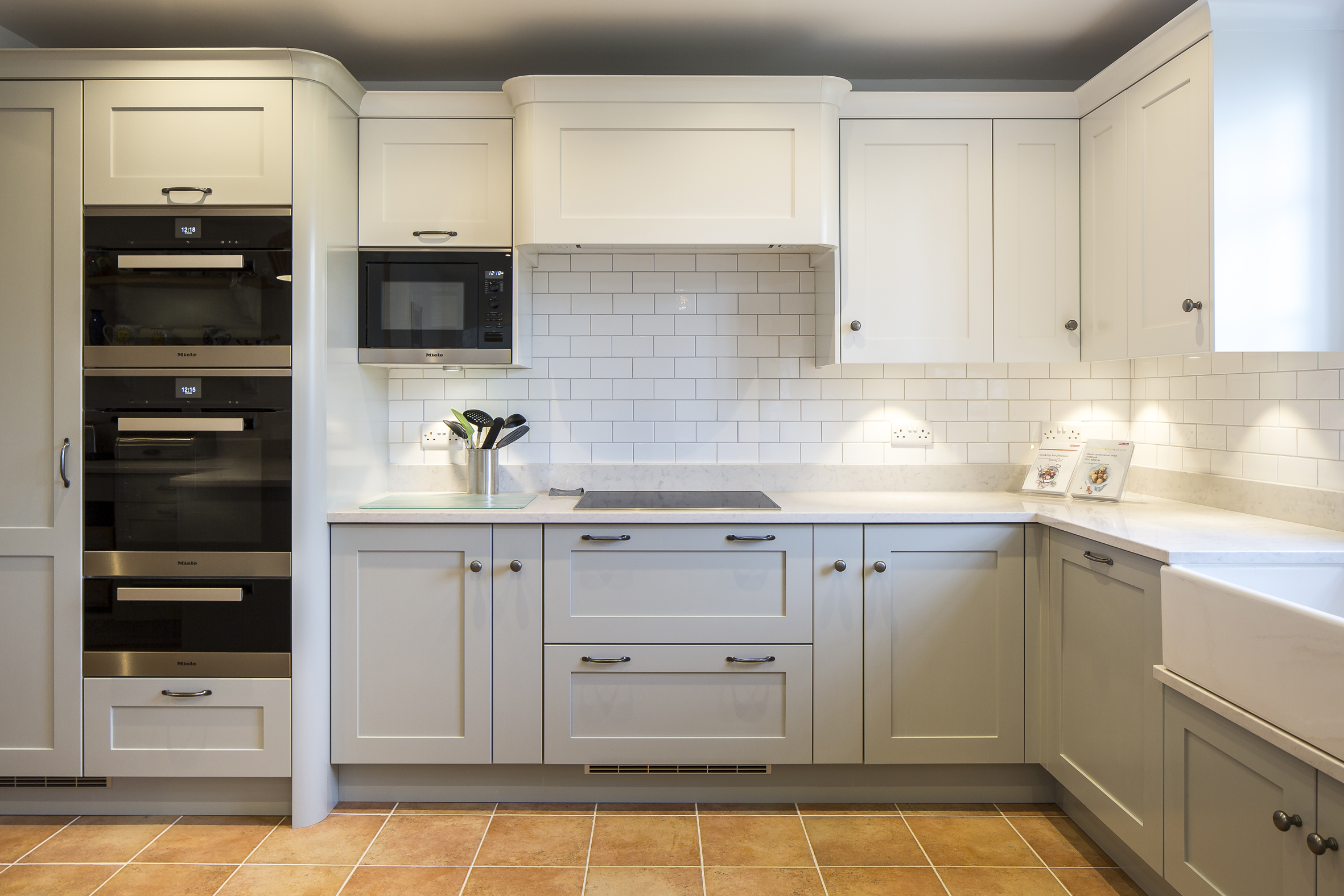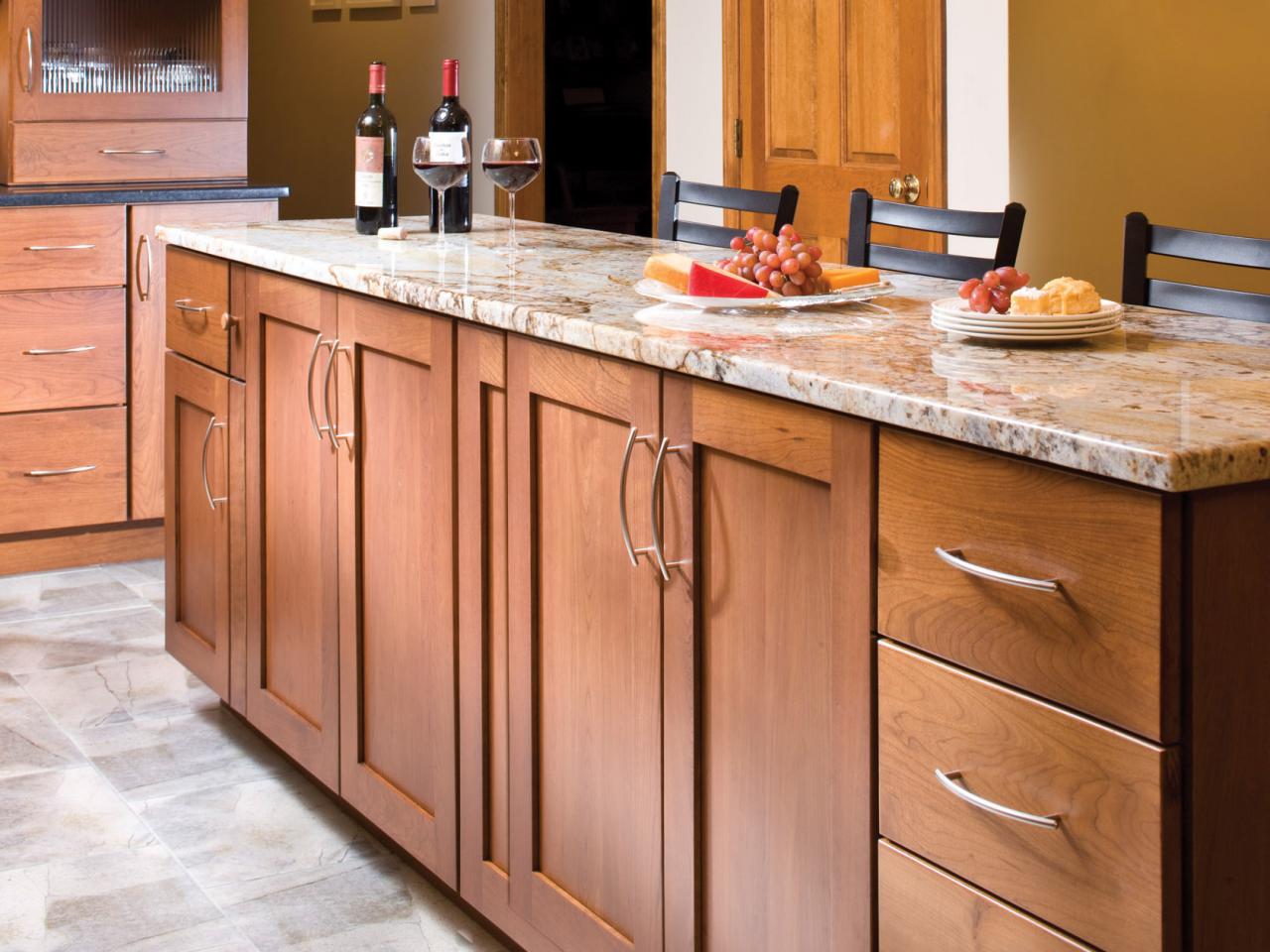Shaker Kitchen Cabinet Styles

Shaker kitchen cabinets are a timeless and enduring style that has captured the hearts of homeowners for generations. Their simple yet elegant design seamlessly blends functionality with aesthetic appeal, making them a popular choice for kitchens of all sizes and styles. This guide delves into the defining characteristics of Shaker cabinets, exploring their history, design principles, and evolution over time. We’ll also compare and contrast them with other popular cabinet styles, providing you with a comprehensive overview to help you make informed decisions for your kitchen remodel.
History and Origins, Shaker kitchen cabinet styles
The Shaker cabinet style traces its roots back to the 18th century, originating with the religious sect known as the Shakers. This group, known for their simple lifestyle and craftsmanship, emphasized functionality and practicality in their designs. Shaker furniture, including cabinets, was characterized by clean lines, minimal ornamentation, and durable construction.
Design Principles
Shaker kitchen cabinets adhere to a set of fundamental design principles that contribute to their enduring appeal. These principles include:
- Simplicity: Shaker cabinets are known for their uncluttered design, devoid of excessive embellishments or intricate details. This simplicity creates a sense of order and tranquility in the kitchen.
- Functionality: Shaker cabinets prioritize functionality, with well-designed features that optimize storage and accessibility. This emphasis on practicality ensures that the cabinets are both aesthetically pleasing and highly usable.
- Durability: Shaker cabinets are built to last, using high-quality materials and construction techniques that ensure their longevity. Their sturdy construction can withstand the rigors of daily use, making them a reliable investment.
Key Elements
Several key elements define the Shaker kitchen cabinet style:
- Recessed Panel Doors: The hallmark of Shaker cabinets is their distinctive recessed panel doors. These doors feature a simple, flat panel inset into a frame, creating a clean and understated aesthetic.
- Simple Hardware: Shaker cabinets typically feature minimalist hardware, such as simple knobs or pulls. This focus on understated hardware complements the overall clean lines of the cabinets.
- Clean Lines: Shaker cabinets are characterized by clean lines and sharp angles, avoiding any unnecessary curves or embellishments. This minimalist approach creates a sense of order and sophistication.
Evolution of Shaker Cabinet Styles
Over time, Shaker cabinet styles have evolved to reflect changing tastes and trends. While the core design principles remain consistent, notable variations have emerged:
- Modern Shaker: This contemporary interpretation of Shaker cabinets features clean lines and minimalist hardware, but often incorporates bolder colors and materials. Modern Shaker cabinets may also incorporate elements of contemporary design, such as sleek metal accents or geometric patterns.
- Rustic Shaker: This style combines the simplicity of Shaker cabinets with the warmth and character of rustic elements. Rustic Shaker cabinets may feature distressed finishes, natural wood textures, or antique hardware.
Comparison with Other Styles
Shaker kitchen cabinets offer a unique blend of style and functionality, setting them apart from other popular cabinet styles:
| Style | Key Characteristics | Comparison with Shaker |
|---|---|---|
| Traditional | Ornate details, intricate carvings, decorative hardware | More elaborate and ornate than Shaker cabinets |
| Contemporary | Sleek lines, minimalist hardware, bold colors | Similar in terms of simplicity but may incorporate more modern elements |
| Farmhouse | Rustic elements, distressed finishes, natural wood textures | Shares a focus on simplicity but incorporates rustic details |
The Appeal of Shaker Kitchen Cabinets: Shaker Kitchen Cabinet Styles

The enduring popularity of Shaker kitchen cabinets in contemporary kitchen design is a testament to their timeless appeal and practical functionality. Their simple yet elegant aesthetic seamlessly blends with various design styles, while their sturdy construction and ease of maintenance make them a wise investment for any homeowner.
Aesthetic Qualities
The understated elegance of Shaker cabinets stems from their clean lines, minimalist design, and absence of excessive ornamentation. Their simple, uncluttered aesthetic creates a sense of calm and order in the kitchen, allowing other elements, such as countertops, backsplashes, and appliances, to take center stage.
“The Shaker style is all about simplicity and functionality, with a focus on clean lines and natural materials.” – [source: Interior Design Expert]
Practical Benefits
Beyond their aesthetic appeal, Shaker cabinets offer several practical benefits that contribute to their enduring popularity. Their functionality is enhanced by features like:
- Durable Construction: Shaker cabinets are typically made from high-quality materials, such as solid wood or plywood, ensuring their longevity and resistance to wear and tear.
- Easy Maintenance: Their smooth, flat surfaces are easy to clean and maintain, minimizing the need for specialized cleaning products or techniques.
- Versatile Design: Shaker cabinets can be customized with various finishes, hardware, and configurations, making them suitable for a wide range of kitchen styles and preferences.
- Functional Design: Shaker cabinets often feature simple, functional hardware, such as knobs and pulls, that are easy to use and contribute to the overall minimalist aesthetic.
Exploring Shaker Cabinet Variations

Shaker cabinets, with their simple elegance and timeless appeal, offer a wide range of design possibilities beyond the basic aesthetic. Exploring these variations allows you to personalize your kitchen, reflecting your individual style and needs.
Shaker Cabinet Door Styles
The door style is a defining feature of Shaker cabinets, shaping the overall look and feel. Let’s delve into the most common variations:
| Style | Description | Image |
|---|---|---|
| Raised Panel | Features a center panel that is raised above the surrounding frame, creating a subtle, three-dimensional effect. | [Image of a Shaker cabinet door with a raised panel, showcasing the raised center panel and the surrounding frame.] |
| Recessed Panel | Characterized by a center panel that is inset or recessed into the frame, offering a clean and minimalist look. | [Image of a Shaker cabinet door with a recessed panel, highlighting the recessed center panel and the surrounding frame.] |
| Flat Panel | Simple and modern, featuring a flat center panel that is flush with the frame, offering a sleek and contemporary aesthetic. | [Image of a Shaker cabinet door with a flat panel, showcasing the flat center panel and the surrounding frame.] |
Shaker Cabinet Finishes
The finish you choose for your Shaker cabinets significantly impacts the overall ambiance of your kitchen. Here’s a comparison of common finishes:
| Finish | Description | Advantages | Disadvantages |
|---|---|---|---|
| Painted | Offers a wide range of colors and finishes, allowing for customization and a modern look. | Versatile, durable, easy to clean. | Can hide the natural beauty of the wood. |
| Stained | Enhances the natural grain and color of the wood, providing a warm and rustic feel. | Shows off the wood’s beauty, can be customized with different stain colors. | Requires more maintenance, susceptible to scratches and water damage. |
| Natural Wood | Preserves the raw beauty of the wood, showcasing its unique grain patterns and texture. | Offers a timeless and elegant look, environmentally friendly. | Can be more expensive, requires regular maintenance to protect the wood. |
Shaker Cabinet Hardware
Hardware plays a crucial role in complementing the Shaker style and adding functionality to your cabinets. Here are some popular options:
| Type | Description | Advantages | Disadvantages |
|---|---|---|---|
| Knobs | Small, round or square pieces that are attached to the cabinet door. | Simple, classic, available in various styles and materials. | May not be suitable for large doors, can be harder to grip. |
| Pulls | Longer, rectangular or bar-shaped pieces that are attached to the cabinet door. | Easy to grip, available in various styles and materials, suitable for large doors. | Can be more expensive than knobs, may not suit all cabinet styles. |
| Hinges | Metal components that connect the cabinet door to the frame. | Provide smooth opening and closing, available in various styles and finishes. | Not as visible as knobs or pulls, but still important for functionality. |
Shaker kitchen cabinet styles embody simplicity and functionality, reflecting a mindful approach to design. Their clean lines and uncluttered aesthetic create a sense of calm and order, allowing the beauty of natural materials to shine through. For those who appreciate a touch of sophistication, incorporating a kitchen cabinet built-in wine rack can add a touch of elegance while remaining true to the Shaker ethos of practicality and purpose.
This thoughtful addition seamlessly integrates a touch of indulgence into the minimalist design, creating a harmonious balance between functionality and style.
Shaker kitchen cabinet styles embody simplicity and functionality, reflecting a commitment to practicality and timeless elegance. This enduring aesthetic can be further enhanced by choosing materials like solid cherry kitchen cabinets , which bring warmth, richness, and a natural beauty that complements the Shaker design philosophy.
The combination of Shaker lines and solid cherry wood creates a kitchen space that is both visually appealing and enduring, reflecting a harmonious balance between form and function.
